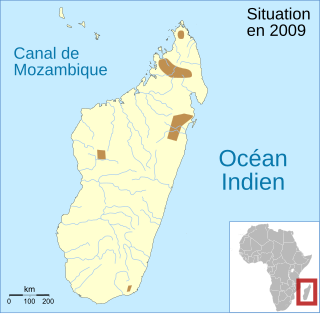
Histeridae is a family of beetles commonly known as clown beetles or hister beetles. This very diverse group of beetles contains 3,900 species found worldwide. They can be easily identified by their shortened elytra that leaves two of the seven tergites exposed, and their geniculate (elbowed) antennae with clubbed ends. These predatory feeders are most active at night and will fake death if they feel threatened. This family of beetles will occupy almost any kind of niche throughout the world. Hister beetles have proved useful during forensic investigations to help in time of death estimation. Also, certain species are used in the control of livestock pests that infest dung and to control houseflies. Because they are predacious and will even eat other hister beetles, they must be isolated when collected.

Ariophanta laevipes is a species of air-breathing land snail, a terrestrial pulmonate gastropod mollusc in the family Ariophantidae.

Cruciata laevipes is a species of flowering plant in the family Rubiaceae. It is commonly known as crosswort, smooth bedstraw or Luc na croise in Gaelic. The Latin epithet laevipes refers to the smooth stalk.

Hakea laevipes is a shrub in the family Proteaceae. A widespread species found growing on coastal and tableland locations mainly in eastern New South Wales, with scattered populations in south-eastern Queensland.

Rhombophryne laevipes is a frog of the family Microhylidae. It is endemic to Madagascar and known from localities in northern, eastern, southeastern, and mid-western parts of the island. It might be a species complex, with the "true" R. laevipes restricted to northern Madagascar.
Hister curtatus is a species of clown beetle in the family Histeridae. It is found in North America.
Hister incertus is a species of clown beetle in the family Histeridae. It is found in North America.
Hister indistinctus is a species of clown beetle in the family Histeridae. It is found in North America.
Hister coenosus is a species of clown beetle in the family Histeridae. It is found in the Caribbean Sea, Central America, and North America.
Hister militaris is a species of clown beetle in the family Histeridae. It is found in North America.
Chelyoxenus is a genus of clown beetles in the family Histeridae. There are at least three described species in Chelyoxenus.
Hister abbreviatus is a species of clown beetle in the family Histeridae. It is found in Central America and North America.
Hister dispar is a species of clown beetle in the family Histeridae. It is found in North America.
Hister depurator is a species of clown beetle in the family Histeridae. It is found in North America.
Hister lucanus is a species of clown beetle in the family Histeridae. It is found in Central America and North America.
Hister sarcinatus is a species of clown beetle in the family Histeridae. It is found in Central America and North America.
Hister servus is a species of clown beetle in the family Histeridae. It is found in the Caribbean Sea, Central America, and North America.
Hister comes is a species of clown beetle in the family Histeridae. It is found in Central America and North America.
Hister defectus is a species of clown beetle in the family Histeridae. It is found in North America.
Fumana laevipes is a species of shrub in the family Cistaceae. They have a self-supporting growth form and simple, broad leaves and dry fruit. Individuals can grow to 10 cm tall.




